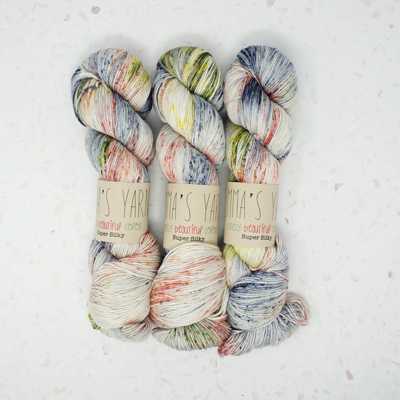Top Reasons On Choosing Bamboo Clothing
Wiki Article
What Makes Yak Merino Base Layers So Effective For Winter Sportswear In Terms Of Natural Fiber Benefits And Environmental Sustainability?
Renewable and sustainable Yak Merino wool's base layer is extremely effective for winter sportswear, not just because it performs very well but also due to its natural fiber benefits.
Yak and Merino Wool are both natural fibers, derived from animals. These are renewable resources that are harvested sustainably and without hurting animals. The fibers are biodegradable meaning they can be broken down in nature without causing environmental harm.
Low Environmental Impact
Natural fibers are typically less damaging to the environment as compared to synthetic materials. The harvesting and cultivation of wool requires less chemicals and uses less non-renewable resources as compared to synthetic fibers.
Energy Efficiency
Wool fibers require less energy to process than synthetic fibers, such as polyester or nylon. The energy consumption during the process of manufacturing natural wool is generally less, which results in lower carbon emissions.
Minimized Microplastic Pollution
Unlike synthetic fibers, which shed microplastics during washing natural wool fibers aren't able to contribute to the microplastic pollution of the water bodies.
The Recyclability and Longevity of plastics
Yak merino garments can last a long time, and are incredibly durable. Wool fibers are also recycled or repurposed in order to further reduce the amount of waste.
Sustainability Practices
Certain wool producers follow ethical and sustainable practices. This includes ensuring animal welfare and responsible management of the land. It also ensures the fairness of labor and conditions of work for the workers who are involved in the production.
Environmental Certification-
The Responsible Wool Standard or the Global Organic Textile Standard are certifications that verify ethical and sustainable practices in the wool industry. They provide buyers with assurances of the sustainability of wool production.
Base layers made of yak merino are typically green because they originate from natural and renewable sources. They also have a minimal environmental impact during production and use sustainable and ethical supply chains. The reason is that natural fibers are environmentally friendly. See the recommended over here about merino wool base layer for more tips including hh lifa merino, merino wool mid layer, men's wool leggings, merino wool mid layer, merino wool base layer women's sale, wool long johns women's, wool layers, wool long underwear, smartwool 1 4 zip womens, merino wool base layer sale and more.

What Are The Benefits Of Bamboo Clothing In Terms Of Softness, Antibacterial Properties Durability And Renewable?
Bamboo clothing is supple durable, durable, renewable and also antibacterial.
Luxurious Feel- Bamboo fabric is renowned for its silky and soft texture. It's often compared with extravagant materials like cashmere or silk. It is soft and gentle on the skin and offers a comfortable wearing experience.
Antibacterial Properties
Bamboo has a natural antimicrobial known as "bamboo Kun." This property helps inhibit the growth of bacteria that cause odor and fungi on the fabric, keeping it fresher over longer periods and lessening the need for frequent washing.
Durability-
Strength- Bamboo fibers are durable and strong despite their softness. Bamboo clothing is long-lasting and can be used in a wide range of ways.
Renewability-
Rapid Growth Bamboo is a renewable source that grows quickly, without the need for pesticides. Bamboo is a renewable resource which grows quickly without the need for pesticides or fertilizers.
Sustainability-
The production of bamboo that is eco-friendly and cultivation generally produces less impact on the environment than that of synthetic materials. Bamboo's rapid development as well as its low need for water and the ability to thrive in diverse climates make it a sustainable material.
Biodegradability-
Natural Decomposition- Bamboo clothing can naturally decompose at the end its lifecycle. This reduces the amount of non-biodegradable waste in landfills. It also minimizes pollution.
Hypoallergenic Qualities
Bamboo fabric is less prone than other synthetic materials to cause irritation to the skin or to trigger allergic reactions. This is why it is a good choice for people with sensitive skin.
Bamboo clothing is awe-inspiring because of its many characteristics, such as softness, antibacterial property, durability renewalability, sustainability and comfort. These qualities are conducive to an enjoyable wearing experience while also aligning with eco conscious practices. Check out the best click for source for bamboo clothing for blog advice including bamboo t shirts mens, lisa frank bamboo pajamas, bamboo apparel, bamboo bed clothes, bamboo shorts, bamboo t shirts mens, bamboo shorts womens, mens bamboo clothing, sustainable bamboo clothing, bamboo ladies clothing and more.

What Are The Differences Between Bamboo And Merino Clothes?
Merino layers, regular wool, and bamboo clothing have distinct characteristics.
Merino Wool is soft and gentle to the skin. It is much less likely to cause irritation and itching than traditional sheep's wool.
Merino wool is moisturizing. Merino wool wicks moisture from the skin, allowing it to evaporate, and to keep the wearer dry and comfortable.
Merino Wool is an excellent insulation, and it offers warmth even when it is wet. It regulates body temperatures as it provides insulation and airflow for overheating when exercising.
Odor Resistant - It inhibits the development and spread of odor-causing bacteria, so garments stay fresher for longer.
Bamboo Clothing
Softness Bamboo clothing is known to have a silky and soft texture that can be compared to cashmere or silk. It's soft and luxurious to wear.
Bamboo fabric is wicks moisture away properties that draw out moisture and help keep you dry.
Temperature Regulation- Bamboo clothing has natural temperature-regulating abilities, offering warmth in winter and breathability to prevent overheating.
Sustainability- Bamboo is a very renewable resource, and it grows rapidly, without the need of pesticides or fertilizers. It is biodegradable, and it has minimal environmental impact.
Regular Wool
Texture- Wool from the traditional has a variety of textures, with some types being coarser and more prone to cause discomfort or itching.
Warmth - Regular wool offers excellent insulation and warmth, but it can also be heavy or bulky.
Absorption of Moisture - Wool may absorb moisture, making it less effective in moisture-wicking compared to merino wool or bamboo fabric. Wool retains its warmth, even if it's damp.
The benefits of merino are its softness, moisture-wicking capability, resistance to odor, and insulation. Bamboo clothing is soft and has the ability to wick moisture away. It also regulates temperatures and is green. Wool comes in many textures, and may not provide the same softness or water-wicking capabilities as bamboo and Merino, however it still provides warmth and insulation. Each type of material has its own advantages, catering to various preferences and requirements for winter clothing. Check out the top merino winter clothings blog for blog tips including ski base layer mens, merino wool base layer women's sale, merino base layer, merino 250 base layer, lightweight merino wool base layer, best long underwear for skiing, wool mid layer, smartwool long sleeve shirt, smartwool thermals, ski underwear and more.
